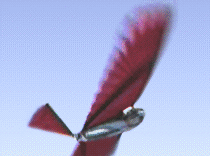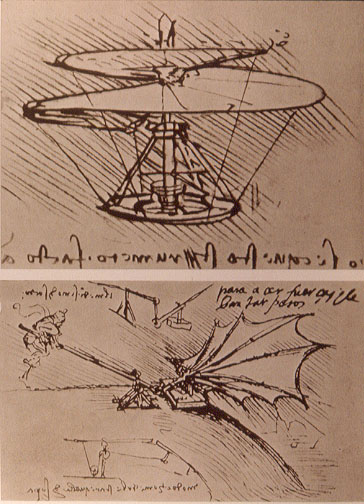|
Entomopter
An Entomopter is an aircraft that flies using the wing-flapping aerodynamics of an insect. The word is derived from ''entomo'' (meaning insect: as in entomology) + ''pteron'' (meaning wing). Entomopters are type of ornithopter, which is the broader term for any device intended to fly by flapping wings. Terrestrial entomopter The terrestrial Entomopter is a multimode (flying/crawling) insect-like robot developed by Prof. Robert C. Michelson and his design team from the Georgia Tech Research Institute (GTRI), University of Cambridge, ETS Labs and others. The Earth-bound entomopter has a 15 to 18 cm wing span. A twin set of wings situated fore and aft of the RCM provide balanced resonant flapping to create not only lift and thrust, but full vehicle control. Wing flapping occurs a 35 Hz constant rate. This biologically inspired aerial robot is classified as a micro air vehicle (MAV) because of its size. Mission payloads are around 10 grams with a full gross takeoff ... [...More Info...] [...Related Items...] OR: [Wikipedia] [Google] [Baidu] |
Reciprocating Chemical Muscle
The reciprocating chemical muscle (RCM) is a mechanism that takes advantage of the superior energy density of chemical reactions. It is a regenerative device that converts chemical energy into motion through a direct noncombustive chemical reaction. Function RCM is capable of generating autonomic wing beating from a chemical energy source. It can also be used to provide a small amount of electricity to the onboard control systems. It further helps in differential lift enhancement on the wings to achieve roll, pitch, and hence, steered flight. The RCM technique is particularly useful in the manufacturing of insect-like micro air vehicles. The first generation of RCMs was large and had a reciprocating frequency around 10 Hz. The later generationshttp://angel-strike.com/entomopter/RCM-Generations.jpg developed were very much smaller and lighter. Also, the reciprocating frequency of this generation RCM was as high as 60 Hz. The reciprocating chemical muscle was invented by ... [...More Info...] [...Related Items...] OR: [Wikipedia] [Google] [Baidu] |
Ornithopters
An ornithopter (from Greek ''ornis, ornith-'' "bird" and ''pteron'' "wing") is an aircraft that flies by flapping its wings. Designers sought to imitate the flapping-wing flight of birds, bats, and insects. Though machines may differ in form, they are usually built on the same scale as flying animals. Larger, crewed ornithopters have also been built and some have been successful. Crewed ornithopters are generally either powered by engines or by the pilot. Early history Some early crewed flight attempts may have been intended to achieve flapping-wing flight, but probably only a glide was actually achieved. They include the purported flights of the 11th-century Catholic monk Eilmer of Malmesbury (recorded in the 12th century) and the 9th-century poet Abbas Ibn Firnas (recorded in the 17th century). Roger Bacon, writing in 1260, was also among the first to consider a technological means of flight. In 1485, Leonardo da Vinci began to study the flight of birds. He grasped that humans ... [...More Info...] [...Related Items...] OR: [Wikipedia] [Google] [Baidu] |
Ornithopter
An ornithopter (from Greek ''ornis, ornith-'' "bird" and ''pteron'' "wing") is an aircraft that flies by flapping its wings. Designers sought to imitate the flapping-wing flight of birds, bats, and insects. Though machines may differ in form, they are usually built on the same scale as flying animals. Larger, crewed ornithopters have also been built and some have been successful. Crewed ornithopters are generally either powered by engines or by the pilot. Early history Some early crewed flight attempts may have been intended to achieve flapping-wing flight, but probably only a glide was actually achieved. They include the purported flights of the 11th-century Catholic monk Eilmer of Malmesbury (recorded in the 12th century) and the 9th-century poet Abbas Ibn Firnas (recorded in the 17th century). Roger Bacon, writing in 1260, was also among the first to consider a technological means of flight. In 1485, Leonardo da Vinci began to study the flight of birds. He grasped that human ... [...More Info...] [...Related Items...] OR: [Wikipedia] [Google] [Baidu] |
Micro Air Vehicle
A micro air vehicle (MAV), or micro aerial vehicle, is a class of miniature UAVs that has a size restriction and may be autonomous. Modern craft can be as small as 5 centimeters. Development is driven by commercial, research, government, and military purposes; with insect-sized aircraft reportedly expected in the future. The small craft allows remote observation of hazardous environments inaccessible to ground vehicles. MAVs have been built for hobby purposes, such as aerial robotics contests and aerial photography. Practical implementations In 2008, the TU Delft University in the Netherlands developed the smallest ornithopter fitted with a camera, the DelFly Micro, the third version of the DelFly project that started in 2005. This version measures 10 centimeters and weighs 3 grams, slightly larger (and noisier) than the dragonfly on which it was modeled. The importance of the camera lies in remote control when the DelFly is out of sight. However, this version has not yet b ... [...More Info...] [...Related Items...] OR: [Wikipedia] [Google] [Baidu] |
Ornithopter
An ornithopter (from Greek ''ornis, ornith-'' "bird" and ''pteron'' "wing") is an aircraft that flies by flapping its wings. Designers sought to imitate the flapping-wing flight of birds, bats, and insects. Though machines may differ in form, they are usually built on the same scale as flying animals. Larger, crewed ornithopters have also been built and some have been successful. Crewed ornithopters are generally either powered by engines or by the pilot. Early history Some early crewed flight attempts may have been intended to achieve flapping-wing flight, but probably only a glide was actually achieved. They include the purported flights of the 11th-century Catholic monk Eilmer of Malmesbury (recorded in the 12th century) and the 9th-century poet Abbas Ibn Firnas (recorded in the 17th century). Roger Bacon, writing in 1260, was also among the first to consider a technological means of flight. In 1485, Leonardo da Vinci began to study the flight of birds. He grasped that human ... [...More Info...] [...Related Items...] OR: [Wikipedia] [Google] [Baidu] |
NASA Institute For Advanced Concepts
The NASA Institute for Advanced Concepts (NIAC) is a NASA program for development of far reaching, long term advanced concepts by "creating breakthroughs, radically better or entirely new aerospace concepts". The program operated under the name NASA Institute for Advanced Concepts from 1998 until 2007 (managed by the Universities Space Research Association on behalf of NASA), and was reestablished in 2011 under the name NASA Innovative Advanced Concepts and continues to the present. The NIAC program funds work on revolutionary aeronautics and space concepts that can dramatically impact how NASA develops and conducts its missions. History The ''NASA Institute for Advanced Concepts'' (NIAC) was a NASA-funded program that was operated by the Universities Space Research Association (USRA) for NASA from 1998 until its closure on 31 August 2007. NIAC was to serve as "an independent open forum, a high-level point of entry to NASA for an external community of innovators, and an external ... [...More Info...] [...Related Items...] OR: [Wikipedia] [Google] [Baidu] |
NASA Institute For Advanced Concepts
The NASA Institute for Advanced Concepts (NIAC) is a NASA program for development of far reaching, long term advanced concepts by "creating breakthroughs, radically better or entirely new aerospace concepts". The program operated under the name NASA Institute for Advanced Concepts from 1998 until 2007 (managed by the Universities Space Research Association on behalf of NASA), and was reestablished in 2011 under the name NASA Innovative Advanced Concepts and continues to the present. The NIAC program funds work on revolutionary aeronautics and space concepts that can dramatically impact how NASA develops and conducts its missions. History The ''NASA Institute for Advanced Concepts'' (NIAC) was a NASA-funded program that was operated by the Universities Space Research Association (USRA) for NASA from 1998 until its closure on 31 August 2007. NIAC was to serve as "an independent open forum, a high-level point of entry to NASA for an external community of innovators, and an external c ... [...More Info...] [...Related Items...] OR: [Wikipedia] [Google] [Baidu] |
Von Karman Institute For Fluid Dynamics
The von Karman Institute for Fluid Dynamics (VKI) is a non-profit educational and scientific organization which specializes in three specific fields: aeronautics and aerospace, environment and applied fluid dynamics, turbomachinery and propulsion. Founded in 1956, it is located in Sint-Genesius-Rode, Belgium. About The von Karman Institute for Fluid Dynamics is a non-profit international, educational and scientific organization which is working in three specific fields: ''aeronautics and aerospace, environment and applied fluid dynamics, turbomachinery and Vehicle propulsion, propulsion''. The VKI provides education in these specific areas for students from all over the world. A hundred students come to the Institute each year to study fluid dynamics, for a PhD programme, a research master in Fluid Dynamics, a final year project and also to gather further knowledge while doing a work placement in a specific area. Each year, Lecture Series and events are being organized insi ... [...More Info...] [...Related Items...] OR: [Wikipedia] [Google] [Baidu] |




